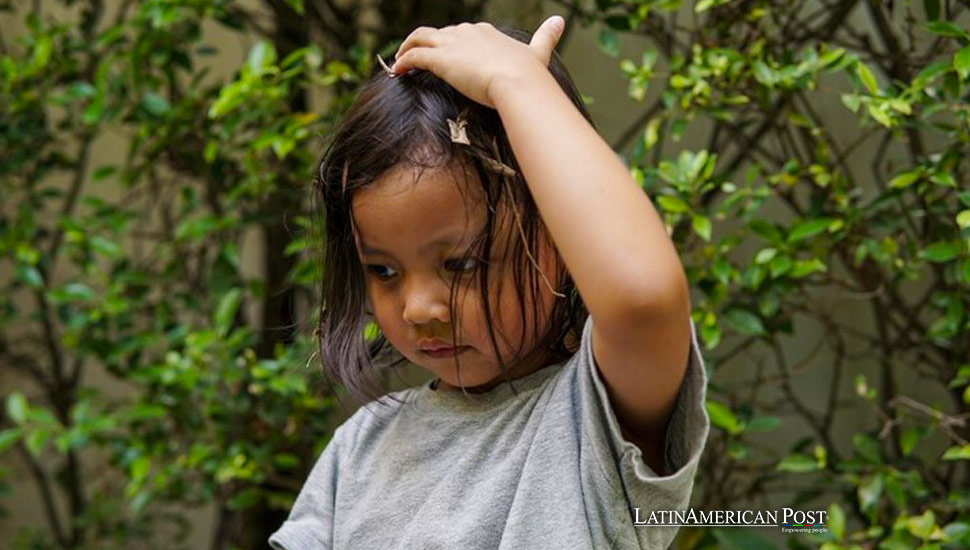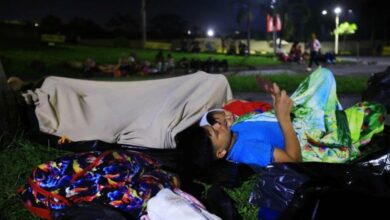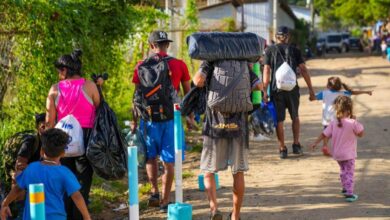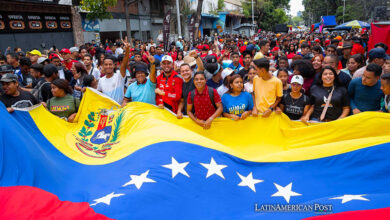Honduras Faces Grave Challenge Combating Violence Against Youth

Honduras faces a “complex” and “enormous” challenge addressing persistent violence against children, adolescents, and young people. Experts warn that over 1,500 deaths since 2022 highlight the urgent need for multifaceted strategies.
Honduras is grappling with a “complex” and “enormous” challenge due to persistent violence against children, adolescents, and young people. This ongoing crisis has resulted in over 1,500 deaths between 2022 and May 2024, specialists warned on Wednesday.
Cándida Maradiaga, coordinator of the Child Advocacy Office at the National Commissioner for Human Rights in Honduras (Conadeh), told EFE that the country faces a “complex” situation of violence with “multifactorial” causes ranging from poverty to dysfunctional families. “It’s complex because it’s a multifactorial issue that requires intersectoral strategies to advance gradually, especially in preventive work,” Maradiaga emphasized.
Honduran authorities focus on combating crime, but it is also “urgent” to implement a Public Policy for the Prevention of Violence against Children and Youth in Honduras, where the figures of violent deaths among children and young people are “chilling and worrying,” Maradiaga stated. According to data from the Network of Institutions for Children’s Rights (Coiproden), cited by Maradiaga, 569 children and young people died violently in Honduras in 2022, 713 in 2023, and 274 in the first five months of 2024.
The number of children and young people killed in Honduras is “highly concerning” and has led the country to become a “dangerous space” for this population, the expert stressed. “We are at a critical moment because violent cases are escalating, and we don’t see a stop,” Maradiaga noted, asserting that the Secretariat of Children, Adolescents, and Family (Senaf) in Honduras faces an “enormous challenge” against the increasing violence in recent years.
Senaf must promote a National Policy with a comprehensive approach to “counteract the high levels of violence,” Maradiaga added, emphasizing that children and young people are among the most vulnerable due to the criminal violence in the country. Of the total number of children and young people murdered in Honduras since 2022, 21% (325) were under 18 years old, and 79% (1,231) were between 18 and 30 years old, according to figures from human rights organizations.
A National Crisis
In statements to EFE, Senaf head Lizeth Coello considered the death of more than 1,500 children and young people in Honduras in recent years alarming and announced that the government is taking measures to reduce violence. “We are coordinating as a system for violence prevention actions,” Coello emphasized, acknowledging that the country still needs “many more efforts” to combat this scourge.
Coello agreed with Maradiaga, highlighting that the situation of violence against children and youth is “extremely complex” due to family dynamics causing “stress and tension situations that unfortunately focus on children precisely because of their vulnerability.” She indicated that the National Policy for Early Childhood, Children, and Adolescents, approved last March by the Comprehensive System for Guaranteeing Children’s and Adolescents’ Rights in Honduras, would address the issues of displacement and violence affecting children and young people.
For Coiproden coordinator Wilmer Vásquez, children and young people are in a “position of greater vulnerability” to violence in Honduras, which in recent years has become a “dangerous country” for this segment of the population. He added that the country faces “enormous challenges” in combating violence due to “massive” social inequality and poverty, which force many children and young people to migrate or be co-opted by criminal organizations.
The Way Forward
The violence in Honduras is not just a national crisis but a regional one. Latin America, despite its cultural richness and economic potential, grapples with pervasive violence and inequality, deeply affecting its youth. Honduras, like many of its neighbors, must tackle these issues through comprehensive policies that address the root causes of violence, such as poverty and lack of opportunities.
The implementation of preventive policies is crucial. These include educational programs, community support systems, and economic initiatives to provide better futures for children and adolescents. The Honduran government, with support from international organizations, must focus on creating safe environments where young people can thrive without the constant threat of violence.
The need for intersectoral strategies is evident. These involve collaboration between government entities, non-governmental organizations, and the community to create a holistic approach to violence prevention. They’re about addressing the symptoms and causes, such as dysfunctional family dynamics, often resulting from broader social issues like unemployment and inadequate access to education.
Moreover, there is a pressing need for international cooperation. Latin America’s interconnected nature means that the issues faced by one country often ripple across the region. Therefore, regional cooperation in policy-making, resource allocation, and strategic planning is essential. Organizations such as the Organization of American States (OAS) and the United Nations can play a pivotal role in facilitating these collaborations.
The children and youth in Honduras “deserve to be the priority” on the government agenda and the allocation of the national budget so that they can “grow and live with dignity,” Vásquez emphasized. This is not merely a call to action but a moral imperative. The future of Honduras depends on the well-being of its young population. By investing in them, the country invests in its future.
Urgent Need for Action
The staggering number of violent deaths among children and young people is a stark indicator of the broader social issues plaguing Honduras. The government’s response, while noted, must intensify. The National Policy for Early Childhood, Children, and Adolescents is a step in the right direction, but its implementation and enforcement will be critical in seeing tangible results.
Creating a safer environment for children and adolescents involves more than just policy; it requires a societal shift in how young people are valued and protected. This means fostering school, community, and home environments where children can feel safe and supported.
Also read: Honduras Unites to Combat Deforestation with Ambitious 2029 Strategy
In conclusion, the violence against children and young people in Honduras is a multifaceted issue that requires a comprehensive and sustained response. The figures are a grim reminder of the urgency to address these challenges. Through nationally and internationally concerted efforts, there is hope for a safer and more secure future for the young population of Honduras. The country’s path forward hinges on its ability to protect and nurture its most vulnerable, ensuring they can grow up in a society that values their safety and potential.





